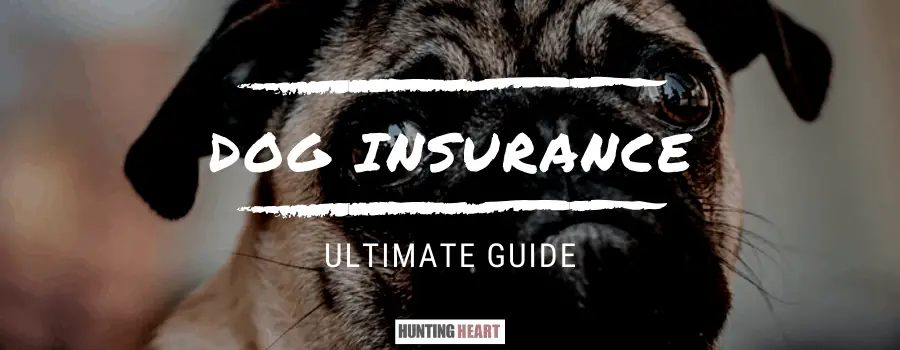As an Amazon Associate I earn from qualifying purchases.
Our Associate portal can be found here
Your dog may fall ill, have an accident, or get mites, and pet insurance helps to cover medical and other treatment costs. Costs for checkups, vaccinations and other preventative care can also be covered or reimbursed depending on your dog’s policy.
General preferences for buying therapy dog insurance coverage are to offset the cost of illness or emergency medical care, including chronic diseases.
What to Know When Getting a Dog Insurance Policy
What Can a Dog Insurance Policy Cover?
Dog health policies cover the actual bill that your vet charges after treating injuries, illnesses, accident emergencies, or genetic conditions in your dog. Your dog can get an insurance cover from as young as seven weeks old, and the inclusions on your policy depend on how much you want to be covered.
During enrolment for your dog’s insurance, you will choose reimbursement options such as 70, 80, or 90 percent of vet bills. Dog insurance payouts happen after you meet either the annual or per-incident deductible.
Insurance policy premiums for dogs are by far cheaper than for humans, with an accident and illness plan costing an average $1 a day.
Among the typically covered costs for dog insurance include vet bills for;
- Accidents
- Congenital conditions
- Illnesses
- Chronic conditions
- Disease diagnostics
- Cancer
- Blood tests
- Ultrasound tests
- X-ray exams
- Prescription medication
- Hospitalization
- Emergency medical care
- Alternative treatment
- Specialty care

What is not Covered by Your Dog’s Insurance Policy ?
While insurance cover protects your dog from any unexpected illnesses or accidents, there are exclusions that are common with primary policy providers. These include;
- Pre existing illnesses or conditions
- Vets exam fees
- Preexisting cruciate ligament injuries when occurring prior to the policy waiting period
- Preventative care
- Dental healthcare
- Neutering or spaying
- Anal gland expression
Exclusions for preventative care includes flea control, vaccinations or the titer test, deworming, heartworm removal, grooming or nail trim. Parasite control that has readily available prophylactic treatments is also common dog policy exclusion, for both internal and external parasites.
Reimbursement is available for dental injury caused by accident, with the essential illness and accident cover. Dog insurance without extensions does not cover fees, expenses, or costs for elective procedures, or those associated with training and behavioral modification.
How Much is the Average Cost of Dog Insurance?
Sampling dog profiles can obtain the average cost of dog insurance from online quote generators by reputable providers. For an analytical sample, a dog policy will have an 80% reimbursement level, $500 annual deductible, and a yearly maximum of $ 5,000.
Dog’s insurance means costs are relative to the pet policy for a four-year-old male Labrador retriever, neutered and has no preexisting conditions. This gives an average price of a policy is $42.45 per month across 11 providers.
A range of close to $50 is displayed across parameters such as the same dog, insurance cover, or location. Expect the monthly cost to be up more than $25 if your dog is prone to injury, and you live in locales where vets are expensive.
For more coverage on your dog, to increase reimbursement level or decrease your deductible, you’ll pay a higher than average premium.

Why Get Dog Insurance?
Considering the cost of settling vet bills without cover should help you to decide whether pet insurance for your dog is worth it. To come up with a clearer picture, look at the top ailments and their treatments for dogs, using data from an average provider’s claims.
Most dog ailments will set you back on average, some $252.75. A common and specific issue in dogs such as puppy Parvo sees average claims of up to $900. Rare but still occurring conditions like cancer will have your afflicted dog undergoing chemotherapy for five to 10,000 dollars.
Common Dog Conditions and Costs at Vet
| Ear Infection | $149.30 |
| Skin Infection | $175.97 |
| Upset Stomach | $384.46 |
| Diarrhea | $203.14 |
| Bladder issues | $617.17 |
| Hyperthyroidism | $123.29 |
| Sprains | $267.17 |
| Arthritis | $255.75 |
| Eye Disease | $115.45 |
The average cost for dog treatment out of pocket for some common ailments may prove that annual insurance premiums may prove less expensive in some cases. However, less common diseases, ailments, or accidents are what insurance seeks to protect you for, easing the financial burden of costly procedures.
Types of Dog Insurance Cover Plans
Accident Only Plans:
These policies cover injuries or incidents like when your dog swallows a foreign object, consumes poison, or hit by a speeding motorist.
Accident and Illness Plans:
A common policy, this plan covers illnesses plus accidents such as your dog having allergies, infections, digestive issues, or cancer.
Cover with Embedded Wellness Programs
A comprehensive plan covering illnesses and accidents, as well as some preventative care procedures like vaccination, deworming, flea control, and burial or cremation.
Endorsements
Including wellness or cancer add-ons are what you may receive as additional coverage to your primary insurance cover.
According to NAPHIA, 98 percent of dog owners have illness and accident coverage for pet insurance. The most popular rider is the wellness add-on, and the other 2% of dog owners use the accident only cover.
What are Preexisting Conditions?
When you purchase your dog’s insurance policy, a preexisting condition is that which occurred before the plan’s maturity date. This condition doesn’t need to have been diagnosed, symptoms or clinical signs are sufficient to be classified preexisting.
Pre-existing conditions are ascertained during a policy’s waiting period, and by norm excused from a dog’s insurance coverage by all providers.
Most basic policies will also not cover a vets consultation or examination fees, and preventative care like immunizations, neutering, dental cleaning, and annual checkups.
Is Your Dog’s Pet Insurance Worth it?
Having pet insurance for your dog is a personal choice, mainly if out of pocket payments for emergencies are not friendly to your budget. Before buying, however, it’s crucial that you compare dog policies across providers for their exceptions, limitations, or co-payments.
There’s peace of mind that comes with buying insurance for your dog, primarily due to unexpected illnesses or accidents. An emergency medical fund may see plausible to you instead of an insurance policy, especially if your dog is not a vet regular
The simplicity of pet insurance in comparison to human policies is that the company pays you directly as opposed to the vet. This means that you can walk into any vet, and then attach the bill to your claim for reimbursement from your dog’s insurance provider.
There’s no need to confirm whether that vet is in partnership with your dog’s insurance company.
Dog Insurance Policies for Preventative Care
A pet policy will foot the bill after you’ve met the deductible for your dog’s illness or accident. This plan covers your dog’s illnesses, infections, accidents such as poisoning, or when it develops a chronic disease.
Buying an extra wellness package for your dog will cover routine vet checkups, protection against fleas or ticks, and vaccine insemination. This is an add-on policy that most pet insurance will offer, so you still must have the basic illness and accident plan in place.
Preexisting, Hereditary, or Congenital Condition.
A common restriction with most accident and illness policies, your dog’s cover has a waiting period after the time of purchase before it matures. If your dog gets an injury after brawling with the neighborhood mutts, you can’t offset the vet’s bill by buying insurance after the incident happens.
Dog insurance doesn’t cover hereditary conditions passed down your pet’s breed. Neither will most policies cover congenital issues that have been present since your dog’s birth. Some common conditions include heart disease, brachycephalic syndrome, or hip dysplasia. Dog breeds that have ‘smushed’ faces are also prone to dental issues, skin problems, or even breathing complications.
Insurance providers for your dog pretty much stick have the preexisting condition exception. Getting a policy for your pet as soon as possible may help mitigate congenital cover issues that could crop up later.

The Policy for an Older Dog.
An age cap of 14 years surrounds most pet insurance policies for dogs, varying slightly with dog insurance providers. The older your dog is when you’re buying its pet insurance, the more expensive the monthly premiums.
This spike in premium costs is further compounded by the annual rate increases and the age of your dog factors into the provider’s price indexing. Some policies for pet insurance exist which offer accident only cover to old dogs depending on their eligibility.
Pet Emergency Fund
Monthly premiums may be unrealistic when you have a robust health dog. Insurance cover premiums go up every year, and your pet may come into the lengthy exclusions list when making a claim.
NAPHIA, the North American Pet Insurance Association, puts average dog insurance at $43 a month or $534 annually. Average claims, on the other hand, stand at $278. A 10-year policy for a healthy young dog sees payments of $5,340 if premiums don’t hike each year, which is unlikely.
Insurance policies also require that you pay a deductible each time an accident or illness claim is made, and some providers have annual deductibles. Keeping an emergency fund for your dog’s medical needs makes more financial sense. As your dog grows older, there will be money to cater to their growing number of vet visits.
Is Your Vet Covered?
One of the benefits of animal insurance is that providers are not networked. This means you can walk your dog into any veterinarian’s office, and make a claim for reimbursements of medical costs.
It makes sense to check with your insurance provider whether your vet is classified as a primary vet.
This means that your vet is either a member of the HSVMA or Humane Society Veterinary Medical Association. Others may require a primary vet to be a member of the AVMA or American Veterinary Medical Association, and to whose enrollment is voluntary.
Whichever the case, your dog insurer may prefer membership of either of the two professional bodies as primary vets, so it pays to check.

Pet Insurance for Common Dog Breeds
What Pet Insurance Should a German Shepard Have?
German shepherds are a breed that’s very family-friendly but can be expensive to insure. See our buyer’s guide for German Shepard dogs. However, pet policies are available for German shepherds, aimed at covering your expenses should the need arise.
The common ailments that German shepherds are prone to include diarrhea, vomiting, limp, and lameness, which can cost an average of $600 for treatment. This working dog also suffers from ear infections, masses, and allergies, which can clock up average treatment costs to $1,000.
Most insurance providers will check for the preexisting allergic condition in your German shepherd, which may lead to exclusion when diagnosed. Seek a pet insurance policy that accommodates your German shepherd’s unique characteristics and consider the cost when settling on a suitable plan.

What Insurance Should a Boxer Dog Have?
With roots taken from as far back as 2,500 BC, the modern boxer traces genetic makeup from Germanic ancestors of the 15th century. The German boxer, known as the Bullenbeisser, was a powerful and strongly-built hunting dog.
This breed was later raised in the UK, during the early 20th century into a sleeker version that’s closely related to the modern boxer. The boxer was introduced into the US after the 2nd world war and still possesses the smarts and loyalty once popular with its ancestors.
Boxers can live up to 12 years but are prone to breed-specific health conditions such as BCM or Boxer Cardiomyopathy. This is a genetic condition that makes them prone to irregular heartbeats. Boxer breeds are also prone to hyperthyroidism and arthritis at an early or order age.
Purchase a health insurance policy for your boxer dog aimed at meeting future medical expenses. And make sure you read our full guide to boxer dogs.

The Best Insurance for an Australian Shepard
An American herding dog that’s misnamed, the Australian shepherd was bred in the western US to Australian herd sheep. A versatile and athletic breed, the Australian shepherd, has an average lifespan of between 9 and 12 years.
Potential Health Insurance Risks for the Australian Shepherds
- Dysplasia of the hip and elbow
- Patellar luxation
- Epilepsy
- Cataracts
- Cancer
- Nasal solar dermatitis
- Autoimmune disorders
Research and make comparisons of policies for your Australian shepherd, scanning through a variety of providers to settle on the best policy. The sooner an Australian shepherd is enrolled in a health insurance plan, the better to mitigate the occurrence of exclusions for preexisting conditions. We have an extensive guide to the Australian Shepherd that you can read here.

What Insurance Should a Vizsla Dog Have?
Originally bred in Hungary, the Vizsla dog was first documented as being presented to Lajos the Great, a Hungarian monarch in 1357. See our buyer’s guide for the Vizsla dog.
Common Vizsla Dog Problems
Vizsla dogs have potential hereditary and genetic conditions that most are prone to, including;
- Cancer
- Hypothyroidism
- Hip dysplasia
- Glaucoma
- Eye issues
- Epilepsy
- Von Willebrand disease
A unique breed, the Vizsla dog, comes with a specified set of needs, but most pet insurance providers have no qualms covering significant illnesses or accidents. Inclusive procedures that are insurable for the Vizsla dog include, surgery, treatment for congenital and hereditary conditions, or chronic disease and emergency care.
Excluding pre-existing conditions and preventative care, Vizsla dog policies are available which cater to specialty care, alternative or diagnostic treatment.
What Insurance Should I Get for My Collie Dog?

With origins in Scotland, UK, the Border collie is a working dog bred to herd livestock and sheep. As a herder, the Border collie is bred for obedience and intelligence, which are traits that have endeared it as a domestic pet. See our buyer’s guide for the Collie Dog.
Border collies are athletic and energetic, a trait that leaves them prone to injuries and other accidents. You can expect a relatively healthy lifespan of 12 years for your purebred border collie.
As an owner of a border collie, you should be aware of their health problems related to hereditary disorder susceptibility. These congenital and hereditary conditions include;
- Hip and elbow dysplasia
- Collie anomaly of the eye
- Obsessive-compulsive disorder
- Retinal atrophy
- Bone breakages
- Luxation of the patellar
- Ligament tearing
Insurance costs samples across the country indicate the Border collie policies cost $29, $42, and $46 per month across the eastern, Midwestern, and western parts of the US, respectively.
What Insurance Should a Maltese Dog Have?

Considered a healthy and hearty breed, the Maltese dog has an average lifespan of 13 or 14 years. The purebred Maltese dog is prone to some expensive health conditions that include;
- Patella luxation
- Glaucoma
- Shunt Portosystemic
- Cryptorchidism
- Necrotizing Meningoencephalitis
- Patent Ductus Arteriosus
- Bladder stones
- Canine cancer
- Hip dysplasia
Protect your Maltese pup with health insurance when he’s young and healthy, especially when you Iive in an expensive zip code. A month for the Maltese dog across the country is average pet insurance costs: $33, $36 and $38 per month across the country. I highly recommend that you read our full guide on the Maltese dog to learn more.
What Insurance Should an Elo Dog Have?
Originally called the Eloschaboro, the Elo dog is a German breed that emerged from the Old English sheepdog, the chow chow, and the Eurasian dog. Developed by Heinz and Marita Szobries, the Elo dg is a medium-sized and friendly dog that’s great for the family.
The Elo dog is, however, very active, and although physical variations are dog-specific, it has good behavior and temperament. Breeders of the Elo dog were also careful to reduce inherited health disorders, although recessive genes have resurfaced due to all Elo dogs being related.
The Main Health Problems Associated with the Elo
Distichiasis: This is having an extra row of eyelashes, which causes irritation to the dog’s eye cornea. Removal of Distichiasis lashes requires special micro-equipment, such as magnifying loupes on referral to a specialist ophthalmologist.
Hip dysplasia: A common purebred dog problem, this is having poor anatomy in the hip region, with shallowly placed and block-shaped pelvic joints. You really ought to check out our full guide of the Elo dog that we wrote a while back.
Renters Insurance and Dog Bite Homeowners Insurance
Your best bud can be a bundle of joy, but sometimes a recipe for disaster, especially for the house you’ve rented. Talk about scratched walls, stained carpets, and the risk of outsiders being attacked or mauled. If your dog becomes sick, you may also find yourself drowning in vet bills.
You can rely on renters insurance as a pet owner for protection against certain damages to your home; your dog’s health and liability cover against attacks or bites.
Renters insurance covers you the tenant on a variety of incidents for which you can be culpable, including your dog’s damage.
Types of Coverage Offered by Renters Insurance
This includes covering financial losses that may occur due to;
- Personal property damage for your belongings and the houses’ contents
- Liability coverage that protects you and members of your household from personal liability
- Living expenses coverage for when your premises are unlivable, covering costs associated with temporary put-up outside your home
Under the liability cover, renters insurance protects damage or injuries that your dog may cause on other people, whether within or outside your home. This coverage will give you protection from the financial costs associated with incidents involving your dog, up to the payout limits of your policy.
When to Make an Insurance Claim
Scenarios that will require personal liability claims due to your pet my involve;
Injury Liabilities
When a guest at your house is under attack or bitten by your dog, and sustains injuries that require hospitalization, you may file a claim to settle their medical bills. Your insurer will negotiate a settlement with your guest’s accident cover provider, and if accepted, your liability policy pays out.
Failure to reach a settlement will see your guest suing you, and when the lawsuit is settled, your provider pays all fees under your renter’s liability policy.
Property Damage
While playing catch in your backyard, your dog gets too excited, going over the fence to your neighbor’s property, where he smashes through an exotic glass screen door. Your indignant neighbor files a property damage claim through your insurance provider, to pay for the damaged screen door.
The same process as for personal liability plays out, even though no individual sustains injuries in the incident. Once your dog is liable for the screen door damage, then your provider covers your neighbor’s costs for replacement.
Renters Insurance and the Pet Cover Clause
Renter’s insurance will give protection and peace of mind against the antics that your dog may get up to. Your wallet is protected from draining when curtains get all scratched up or the carpet stained with renters insurance.
Since renter’s insurance covers damage to property through fire, flooding, or other breakages, most policies include pet cover as an add-on. Illnesses or accidents that affect your dog are also covered, and so is coverage for property damaged or persons injured by your canine friend.
With renters insurance, you can add your dog’s health cover that will reimburse a percentage of vet fees.
What if Renters Insurance fails to Provide Cover for Your Dog?
As well as with a variety of liability related covers, renters insurance may exclude your dog from coverage due to risk-related factors. Renters insurance is distinct from pet health cover, which offers protection for your dog’s wellness. The policy also won’t cover your property when it’s your dog that’s done the damage.
For instance, when your furry friend upends the glassware cabinet or breaks fine china, renter’s coverage won’t reimburse on personal property cover or liability. However, if your guest’s limited-edition sneaker is torn apart by your playful spaniel, renters insurance will assume liability if you are the tenant.
When Can’t I Make an Insurance Claim for My Dog?
Typical dog sub-limits and exclusions for coverage on renters insurance include;
Specific Dog Breeds
There is an exclusions list that most providers use for dog breeds perceived as aggressive such as pit-bulls
Bite or Attack History
A dog with a history of previous attacks or bites may not get an insurance cover from most insurance companies.
Exotic Dog Breeds
Dogs brought into the US as foreign exports such as Japanese spritzes or breeds crossed with wolves get traditional exclusions from renters insurance.
Always check what sub-limits are there for your dog, as an insurance provider will use any of the above reasons to cap claims payouts. Some insurers will offer policy riders on your renter’s insurance that increases coverage for specific dog-related incidents such as attacks or bites.
Which Dog Breeds are not Eligible for Renters Insurance Cover?
While most dog breeds get cover through the personal liability protection for renter’s insurance cover, several breeds are not eligible. If one of these breeds causes injury or damage, renters insurance will not honor the claim.
This is due to the high insurance claim risk associated with commonly excluded breeds such as;
- Great Danes
- German shepherds
- Beaucerons
- Rhodesian Ridgebacks
- Rottweilers
- Mastiffs
- Doberman pinschers
- Chow chows
- Keeshonds
- American bulldogs
- Pit bulls
- Akitas
- Belgian Presa Canarios
- Wolf-Hybrids
- Staffordshire Terriers
- Malinois
- Siberian Huskies
- Alaskan malamutes
According to the American Kennel Club, most of the listed dogs tend to be loyal, confident, and of medium to tremendous build profiles. Some breeds like the pit-bull are more aggressive while it’s not the case for others like the Siberian husky.
A dog’s strength and size will undoubtedly impact the damage or injury they can cause regardless of its breed’s temperament. This makes claims to renters insurance more severe and frequent than other covered breeds.
Before purchasing your dog’s insurance, it’s conditional that your insurance provider may want to know which breed it belongs to. This may also be a consideration when you want to buy either renters insurance or a new pet dog.
Other reasons that your dog may not be offered an insurance policy is if it has been involved in biting or attacking incidents in the past. Failure to disclose such information may result in your claim being denied, and some providers may even cancel or require you to renew your dog’s policy.
Any future policies arising from such cancellation will be expensive since insurance providers share common bites and attacks databases. Where your dog breed or temperament are causing exclusions, find renters insurance that can accommodate your dog at a competitive price.
Claiming a Dog Bite Liability on Renters Insurance
Whether you live in a family home or apartment, personal liability claims for a dog bite receive similar treatment to other renter’s insurance claims. Notify your dog insurance provider when someone is bitten or has been attacked.
Making a liability claim will depend on the severity of the victim’s injuries.
The resultant claim or the lack thereof depends on the extent of the injury since a bandaged scratch will not warrant the deductible it accrues. If the victim has to be hospitalized, receives stitches or reconstructive surgery and other medical procedures, the incident will require a liability claim.
Your renter’s insurance will cover the costs up to the policy’s limits for the victim’s injury liability claim.
What if Renters Insurance Won’t Cover Your Dog?
When your renters insurance doesn’t cover your dog’s legal liability, you can ensure coverage with a personal umbrella policy. The personal umbrella cover augments your renter’s policy and provides liability insurance as increased coverage on your dog’s behalf.
Once your dog’s liability limits are utilized on the renters cover, your umbrella policy kicks in, but only after liability limits are exceeded. Your personal umbrella policy’s standard liability cover usually starts at $1 million. Ensure that your umbrella insurance covers the gaps in risks left open by your renter’s insurance, as it’s often offered as an add-on by providers.
The requested coverage for your dog, as well as factors to do with personal risk, determines the cost you’ll pay for umbrella coverage. Most providers will offer discounts for bundled policies such as a personal umbrella cover with renters insurance.
When an umbrella policy doesn’t help with the exclusions placed on your dog, the next option is pet liability insurance. A dog-specific policy is available with some insurers, though not as common as umbrella policies or renters insurance.
Do Your Homework before Settling on a Dog Policy.
Dog health care insurance is unlike its human counterpart, in that there are no comparable premium, deductive, or co-pay tiers. It may not be ultimately profitable to assume that your dog’s policy covers what you think it should.
If exiting dog policies is something to look out for, each insurance provider has a different benefit schedule. Predetermined limits will cap accidents or illness condition payouts at quarterly maximum, per incident, or an annual cap.
Amazon and the Amazon logo are trademarks of Amazon.com, Inc, or its affiliates.

36 years old, been hunting and fishing my entire life – love the outdoors, family, and all kinds of hunting and fishing! I have spent thousands of hours hunting hogs and training hunting dogs, but I’m always learning new stuff and really happy to be sharing them with you! hit me up with an email in the contact form if you have any questions.



